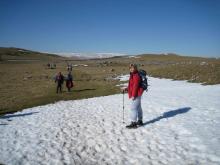Guidance for Leaders of Maghull Rambling Club Walks
This Guidance has been compiled from relevant sections of Navigation and Leadership -a manual for walkers, published by the Ramblers Association. It represents good practice and as far as is reasonably possible, walk leaders and participants should observe it. It is also intended to ensure that, as far as possible, the Club complies with the requirements of its liability insurers. This revised guidance was approved at a Special Meeting of the Club on 5 June 2012.


